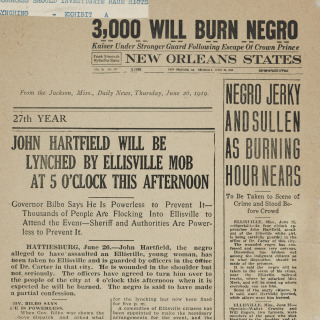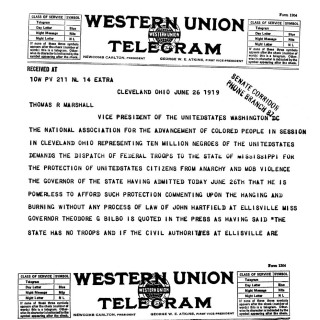Red Summer 1919
Denied the right to vote, post-Reconstruction Southern blacks were powerless against atrocities like lynching. Only voters could serve on juries, and white juries rarely convicted individuals or groups accused of mob violence against African Americans. It was not uncommon for white supremacists to advertise a lynching in advance. Crowds often gathered, and many purchased postcards of the event. It was reported that from 1889 to 1918, more than 2,500 black men and women were lynched.
In the United States, violence against African Americans intensified during times of social and economic upheaval. The recession following World War I was such a time. Returning veterans faced fierce competition for jobs. There were even incidents of lynching black soldiers while in uniform. In 1919, the tension erupted in race riots in more than 30 cities across the United States. This period has been referred to as the “Red Summer.”

